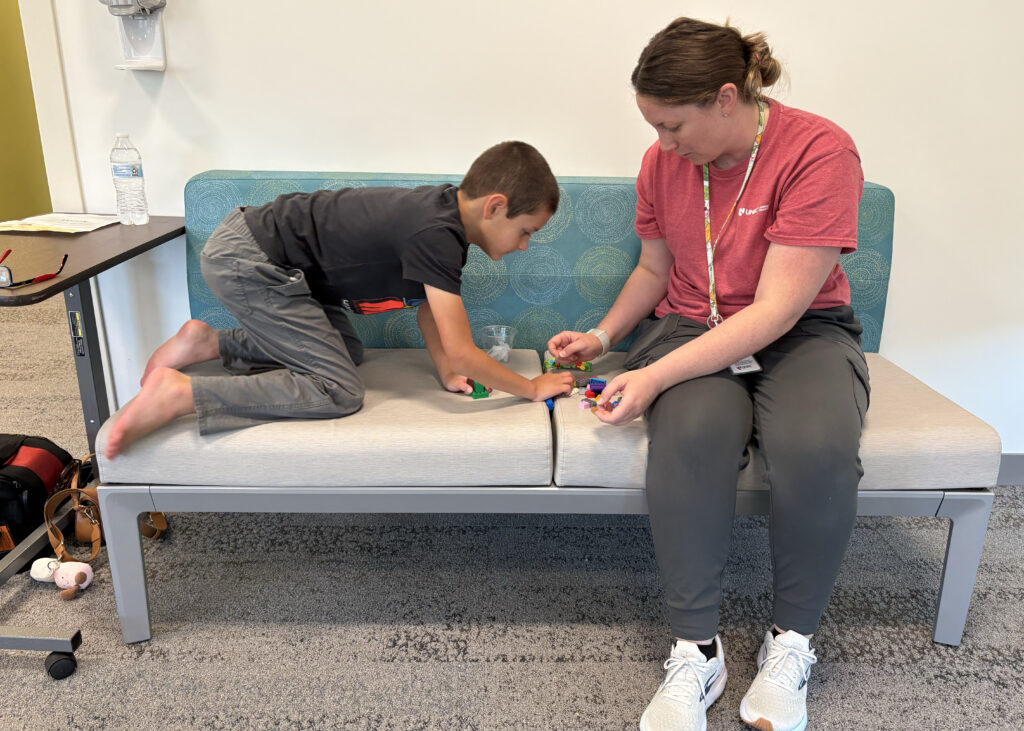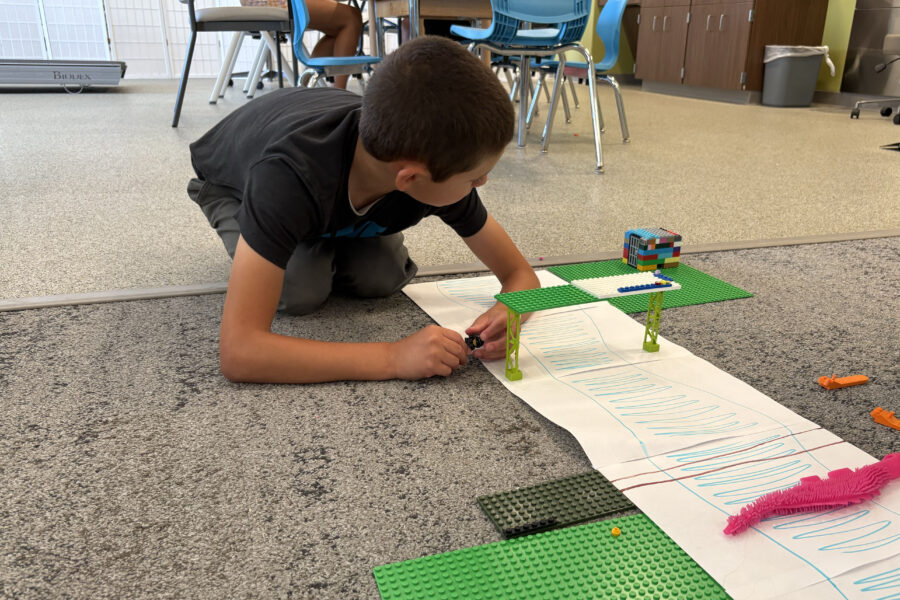George Robertson placed a cabin down on the side of a sprawling river drawn with blue magic marker.
George was one of a handful of campers decorating the makeshift river and its banks with creations built from Lego bricks. His peers added boats, bridges and clusters of flowers.
This was the third session of Lego Camp, hosted by the Munroe-Meyer Institute’s Department of Occupational Therapy, since it was created in fall of 2024. The department hosts other camps, too, including handwriting camp, cooking camp and social skills camp.
Campers meet once a week for five weeks. While fine motor skills, spatial awareness and hand-eye coordination are the primary focus of Lego Camp, participants also learn daily living skills and social skills, said Chelli Westengaard, director of MMI’s Department of Occupational Therapy.
An added plus? The repetitive nature of playing with Lego bricks can be beneficial to children with autism spectrum disorder, too.
“It provides comfort and routine for children with autism,” Westengaard said. “It’s a great, engaging and therapeutic tool for intervention.”
Each of the five camp sessions had a different theme. The final day saw campers incorporating water activities with Lego building.
First, campers rolled dice — one labeled with numbers, and one labeled with colors. They then had to pull that number of colored Lego bricks or accessories from a mixing bowl full of water. Campers could use a slotted spoon or pluck the bricks out with their fingers before dropping the wet Legos into a plastic cup.
“This is hard,” one camper said while plopping dripping Lego pieces into a clear plastic cup.
Once they were satisfied with the amount of Legos in their cups, campers got to build.

Later campers received cups of assorted Legos covered in tape. After peeling the tape off, campers had to sort the Legos by color before building with them.
George quickly ripped the tape off his cup and, with help from a fellow camper, started crafting a color-coordinated Lego tower.
The most popular part of camp comes at the end — free build. This week saw campers adding to a paper river. George got to work placing a cabin on the banks and moving Lego men across bridges built by his peers.
Other campers sifted through a bin of Legos, finding just the right pieces for their boats and bridges.
Camp is about more than just building with bricks, said Nicole Wiese, an occupational therapy student who designed this summer’s camp curriculum.
Scooping up the bricks supports self-feeding skills. Peeling tape strengthens fine motor control and coordination, Wiese said.
“These are all foundational skills that contribute to a child’s ability to perform every day self-help tasks, like dressing, feeding and grooming,” she said.
Campers also practice social skills, too, like taking turns, sharing materials and collaborating with each other on their builds.
“Through play, kids explore their environment, build relationships and gain confidence in themselves,” Wiese said. “When therapeutic goals are woven into fun and meaningful activities, children are more motivated to engage. It’s important to find ways to make it enjoyable and meaningful for each child.”
